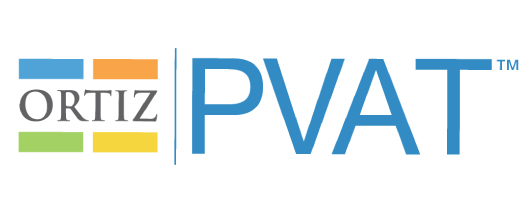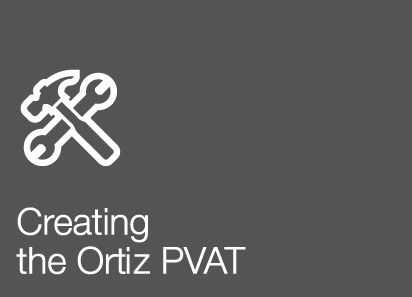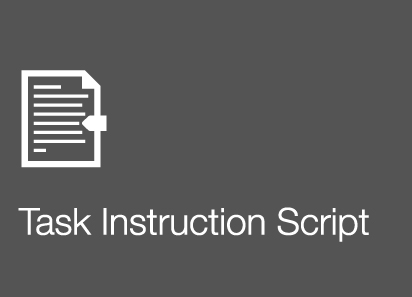- Technical Manual
- Chapter 1: Introduction
- Chapter 2: Theory and Background
- Chapter 3: Administration and Scoring
- Chapter 4: Scores and Interpretation
- Chapter 5: Case Studies
- Overview
- Case Study 1: Clinical Evaluation of an English Speaker Suspected of Having a Speech-Language Impairment
- Case Study 2: Progress Monitoring of an English Learner with Suspected Deficits in Verbal Ability and Language
- Case Study 3: Psychoeducational Evaluation of an English Learner with Suspected Specific Learning Disability
- Chapter 6: Development
- Chapter 7: Standardization
- Chapter 8: Test Standards: Reliability, Validity, and Fairness
- Task Instructions Scripts
Vocabulary Acquisition and Language Development |
The steady and deliberate acquisition of vocabulary throughout an individual’s life is a fundamental aspect of general human development. From birth, human beings acquire the ability to perceive and comprehend that certain sounds have and carry meaning (Fromkin, Rodman, & Hyams, 2013). These sounds are often delineated and linked in a distinctive way and are ultimately recognized and understood as individual words through usage and language context. The process by which vocabulary is acquired, as well as whether word comprehension is demonstrated in a receptive manner or illustrated expressively, is well known and understood (Fromkin et al., 2013; Milton, 2009). Although estimates vary greatly, there is some degree of consensus regarding when the first word is learned (about 6 to 9 months) and the typical size of an individual’s vocabulary at a given age (e.g., approximately 100 words by age 2, and approximately 16,000 words by age 18; Fromkin et al., 2013). It is important to note that there is a distinction between the “acquisition” of language, which is generally defined as language that forms somewhat naturally and contextually during the early developmental period (from birth to approximately age 10 or 11 years), versus “learning” a language, which usually occurs after this period and often in a decontextualized situation and through conscious effort (Cummins, 1984; Milton, 2009). There are various theories regarding this distinction in language development, but they do not necessarily alter vocabulary acquisition patterns, except in cases where a new language is introduced at some point after an individual’s birth (this issue will be discussed in more detail later in this chapter). In essence, vocabulary acquisition is a well-known and understood developmental process that is related to age, much like physical and cognitive maturation.
Because its developmental pattern and trajectory have been delineated, the measurement of vocabulary acquisition is relatively straightforward. One only needs to determine which words are typically learned at various ages and sample them to create pools of words that can provide the necessary indexing for evaluation. In this regard, however, what makes the acquisition or learning of a word “typical” for a given age has less to do with the complexity of the word (e.g., length, number of syllables, meaning) than with its frequency. There are additional issues related to how human beings are most easily able to formulate sounds expressively, but, in general, vocabulary acquisition proceeds largely on the basis of frequency. Simply put, words that occur frequently in a language are usually acquired or learned sooner than words that either occur infrequently, are uncommon in general language use, or fall outside the context of education. For example, a word like “watermelon” is composed of ten letters and four syllables, but the word “specious” is composed of only eight letters and two syllables. Although the word “watermelon” is made up of more letters and syllables, it is not a more difficult or advanced word because it occurs far more frequently in general language than does “specious.” Thus, an individual is much more likely to acquire or learn the meaning of the word “watermelon” well before “specious.” Likewise, short, simple words like “a,” “and,” “I,” and “the,” which occur with great regularity in general language, are among the very first words that find their way into the vocabulary repertoire. As noted by Milton (2009), “it seems inevitable that a measure of vocabulary knowledge that can be compared across learners, educational systems, languages, and countries must draw on frequency information” (p. 43). Thus, the issue of frequency has significant implications for the measurement of vocabulary acquisition because it is the central principle regarding why some words are acquired or learned at a particular age, whereas others are acquired or learned at a different time.
With minor exceptions, all of the issues presented thus far have been routinely incorporated into the structure and design of tests designed to measure vocabulary acquisition. Beyond the issues of general development and frequency of occurrence, another important factor in test design of vocabulary acquisition is the relationship of vocabulary words to the context of language use. In general, linguists describe four stages of general language acquisition (of which vocabulary is an important component): pre-production, early production, speech emergence, and intermediate fluency (Fromkin et al., 2013; Krashen, 1982). The leap from speech emergence to intermediate fluency (as well as use of the term “intermediate”) indicates that linguists approach language primarily from the perspective of general conversational usage. Once an individual reaches this fourth level (i.e., intermediate fluency), they are proficient enough in the language to be considered fluent by virtue of being able to make their basic needs known, engage in effective social conversations, carry on normal everyday business and relationships, and comprehend and express oneself with clarity and purpose. Possessing the ability to function at this level of language, however, requires only a very small fraction of vocabulary words as compared to the total number of words available in the language. In English, for example, such functioning can be accomplished with approximately 2,000 of the most frequent words (Milton, 2009). As such, if vocabulary tests limited their sampling to words used in general social conversations, there would not only be an extremely small pool to select from, but it would also be difficult to discern the breadth and depth of an individual’s vocabulary from age to age. Consider that the typical 5-year-old child already possesses about 2,000 words in their vocabulary by this age.
As Milton (2009) notes, “the evidence suggests that the vocabulary uptake from truly incidental [oral] language exposure is usually negligible and that successful learners acquire large volumes of vocabulary from the words explicitly taught in the classroom and supplement their learning by targeting vocabulary in activities, like learning the words of songs, outside of class” (p. 2). Thus, to make assessment more meaningful and to allow some degree of precision in being able to differentiate the development of individuals at different ages, it is necessary to sample from words that are not limited to general conversational usage but which might occur in other contexts. Two such alternate contexts includes the educational setting and incidental learning experiences away from the classroom that are more than mere social discourse.
The Educational Setting
A rich source of vocabulary words that are not acquired through general use and social conversation comes from the curricular content taught in school. School provides both the opportunity for general conversation and also the introduction of vocabulary that is related to specific topics, such as math, geography, science, and social studies. Moreover, the school setting also provides an opportunity to extend the quality and sophistication of language in general conversations via the teaching of advanced language skills, either in the form of oral skills (e.g., speech, debate, or oratory) or written skills (e.g., essays, poetry, or creative writing). Naturally, vocabulary remains at the heart of this type of instruction and thus greatly expands the number and type of words that are likely to be “typical” for a given age or grade. This very concept was clearly delineated in an elegant manner by Cummins (1981, 1984), who distinguished the type of proficiency used in general, everyday conversations as Basic Interpersonal Communicative Skills (BICS) from the type of proficiency that is founded upon formal education and underlies advanced cognitive and conceptual development known as Cognitive Academic Language Proficiency (CALP).
Cummins’ conceptualization of language as being rooted in general social language, versus the more formal academic language derived from education, provides a useful basis for both the selection and arrangement of words in a vocabulary test, particularly one that encompasses the age range associated with schooling. According to Cummins, CALP takes approximately five years of formal education before it begins to emerge, and is built on top of prior development that forms proficiency at the BICS level. Thus, it is possible to parse each type of proficiency as moving through a linear development that begins with the early phases of development, moves on to intermediate proficiency, and ends with the advanced stages of proficiency. Similarly, vocabulary acquisition, which follows the same pattern of development as language proficiency, can also be described as moving from words at the BICS level to words that reflect growth along the CALP dimension, assuming formal education is taking place. In this way, the sampling and measurement of vocabulary acquisition can be very closely tied to age and grade milestones that delineate quite well the type and nature of words that should have been acquired or learned by a particular point in an individual’s life. The concepts of BICS and CALP, therefore, form an ideal framework upon which to construct and design a test of vocabulary acquisition.
Incidental Learning Experiences
In theory, all individuals would be presumed to have relatively similar opportunities in which to acquire new vocabulary words outside the domain of formal education. With all things being equal, there should be no particular reason why one individual might have an advantage when it comes to increasing their vocabulary with words that are not specifically taught in school. In reality, it is clear that some individuals appear to have significantly more opportunity for and interest in vocabulary acquisition that is not developed from formal schooling. One such notable variable that creates this inequity is socioeconomic status. Individuals have significantly better opportunities for incidental learning to expand non-curricular vocabulary when raised in homes where there is sufficient time and finances that permit vacations to other countries, frequent visits to museums, and long-term exposure to high-level language models from highly educated parents (Krasinski & Anderson, 2017).
In a similar fashion, individuals who learn to read well and at an early age are more likely to eventually find reading a pleasurable activity in which they will continue to engage frequently throughout their lives. Those who have had fewer positive experiences with reading for a variety of reasons (e.g., reading difficulties such as dyslexia, or non-native English speaker who is struggling to keep up) and those who find reading to be an arduous and painstaking task are likely to find reading a less enjoyable activity than individuals without such barriers. As a result, reading is an activity that is more often avoided than sought out. In this way, the principle of the “rich getting richer” and the “poor getting poorer” plays out through differential rates of vocabulary acquisition of words that are not necessarily taught explicitly within the context of school curricula. Indeed, for this very reason, vocabulary tests that are intended to be measures of ability or “intelligence” sample from such words that are expected to be learned incidentally, whereas tests that are expressly academic in nature tend to sample from words common to the educational domain. Incidental experiences, thus, present opportunities for the acquisition of words that are not necessarily restricted to general conversation, but that are also not derived strictly from academic content. As such, assuming relatively equal opportunity for vocabulary acquisition, these words provide an important source from which to evaluate and differentiate vocabulary development (Milton, 2009).
| << The Importance of Vocabulary | Bilingualism and Vocabulary Development >> |





